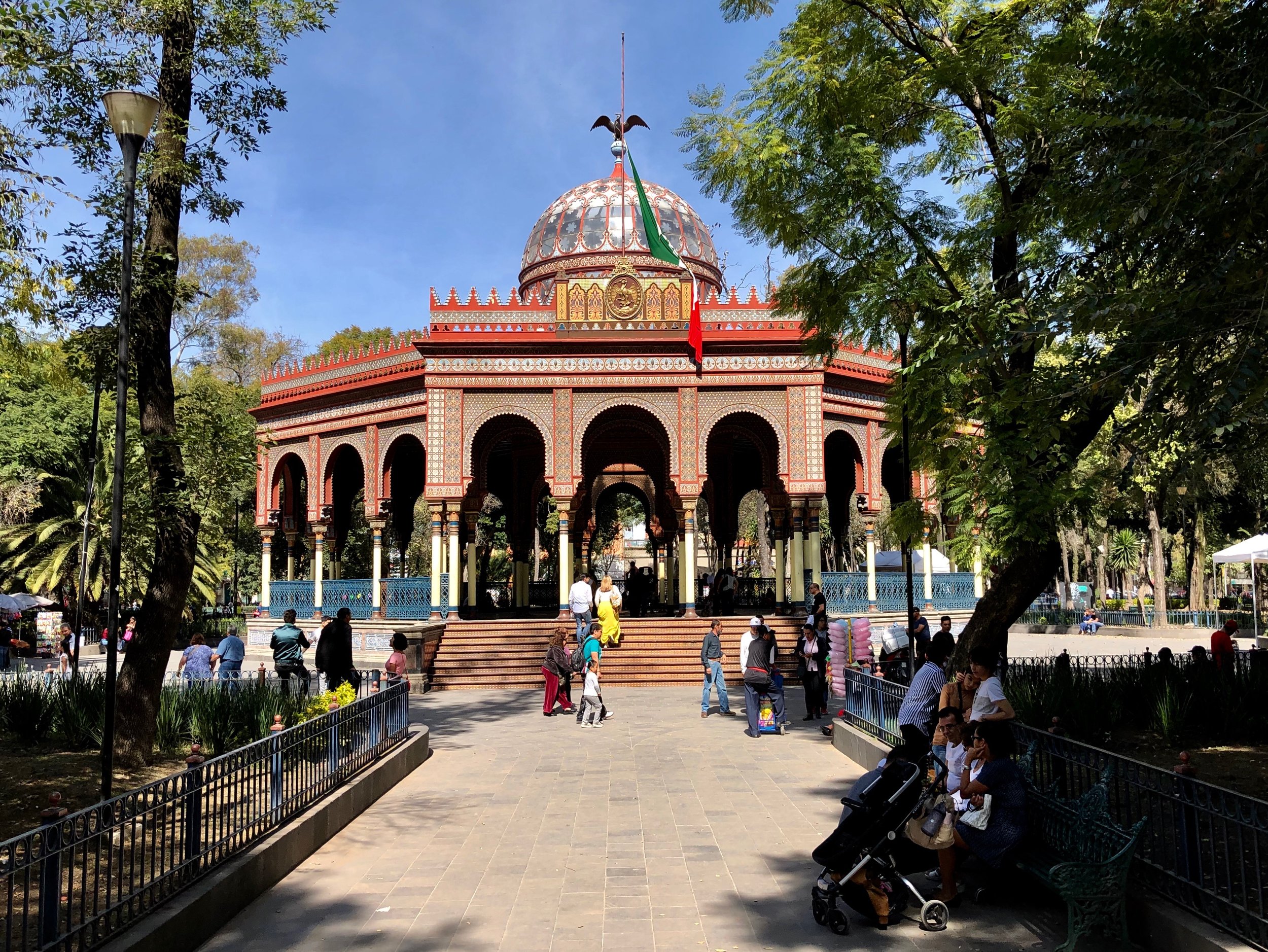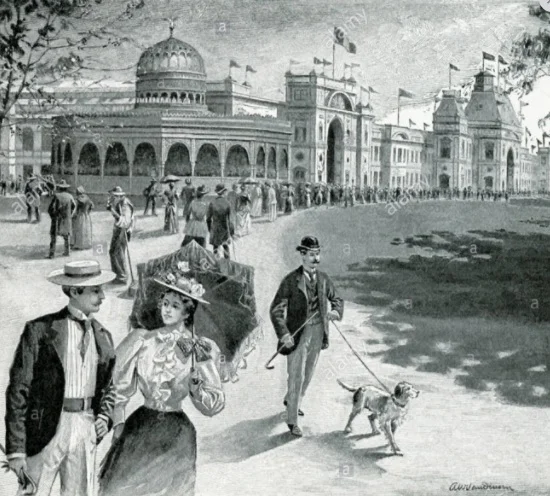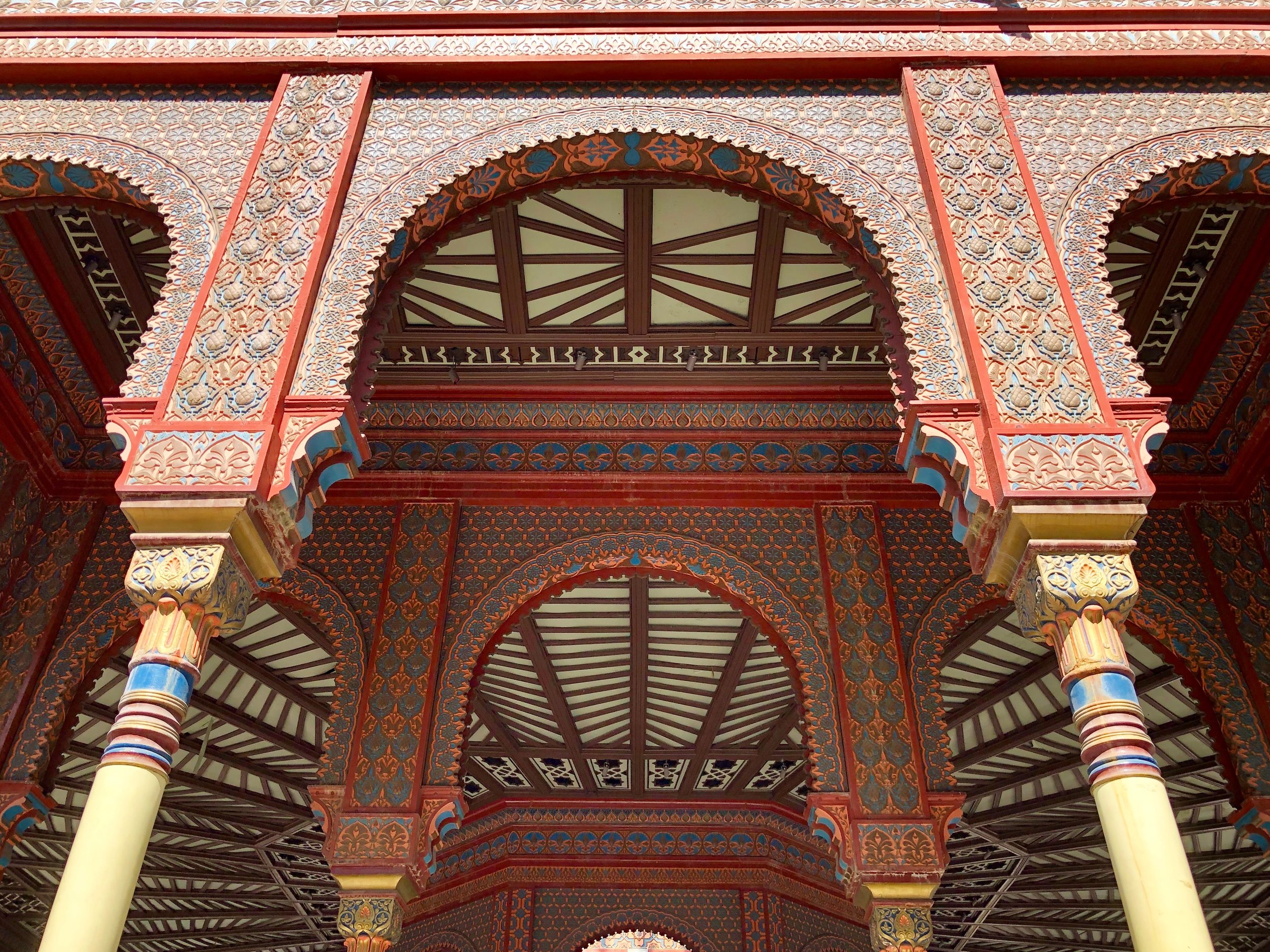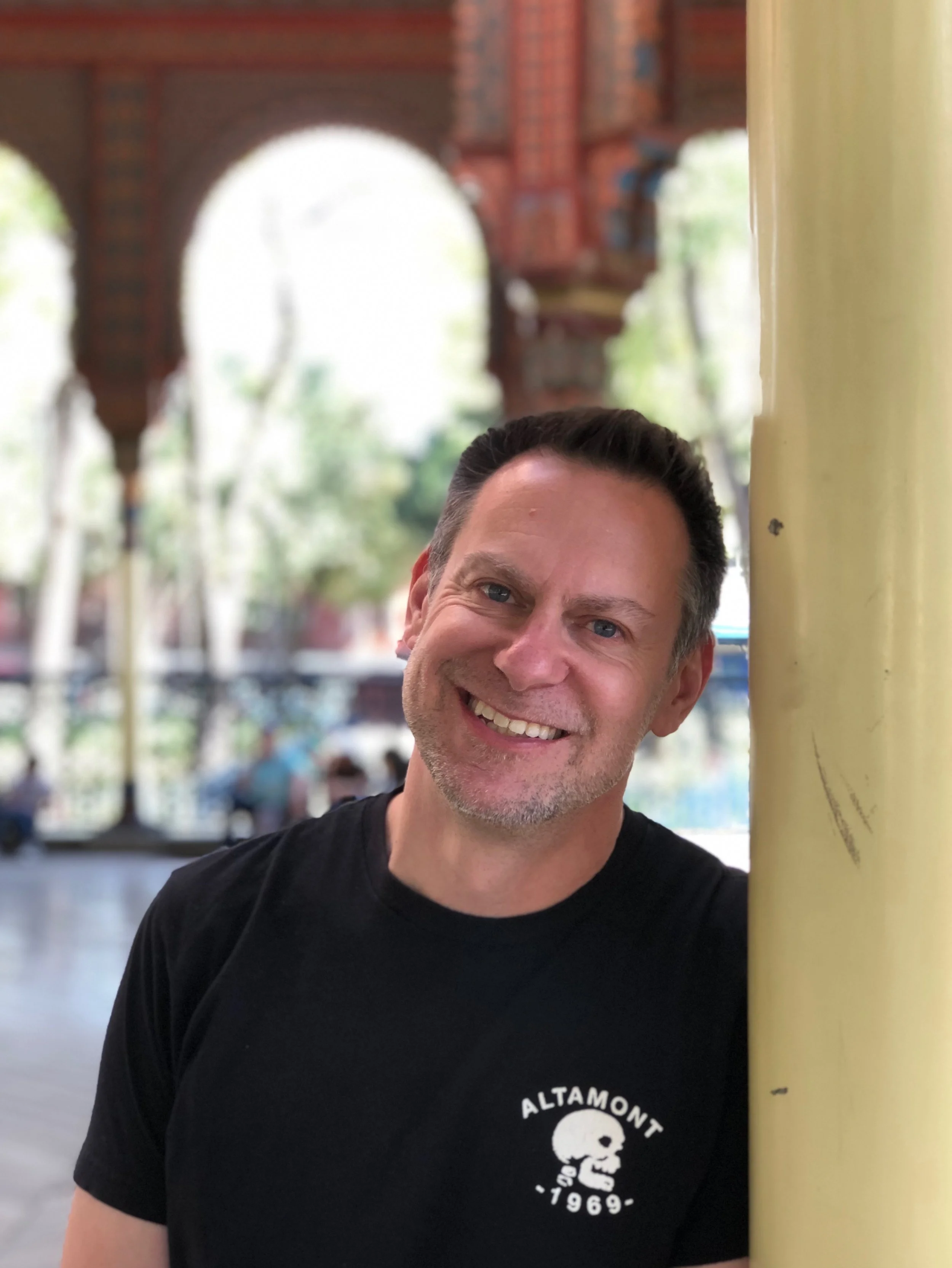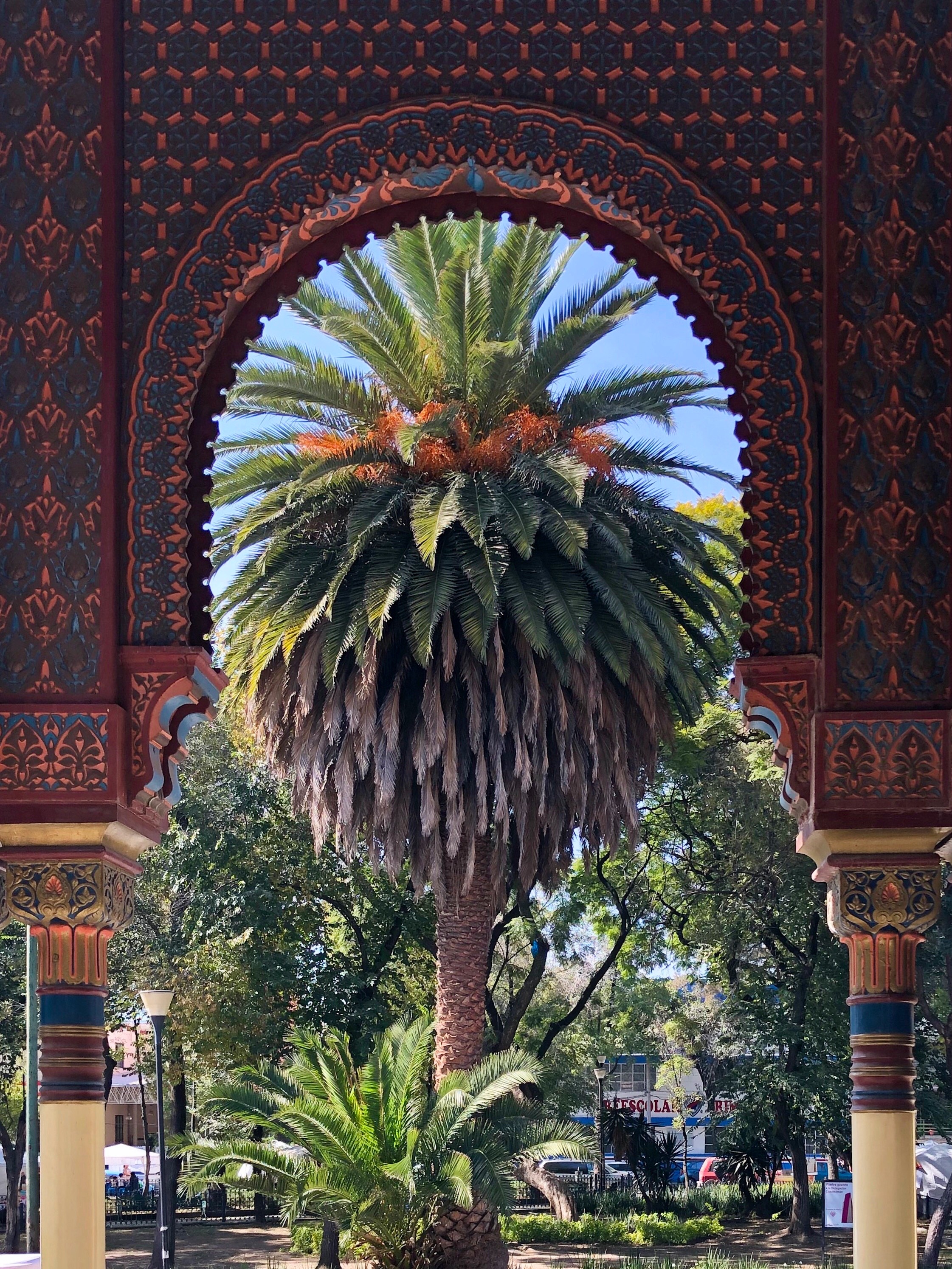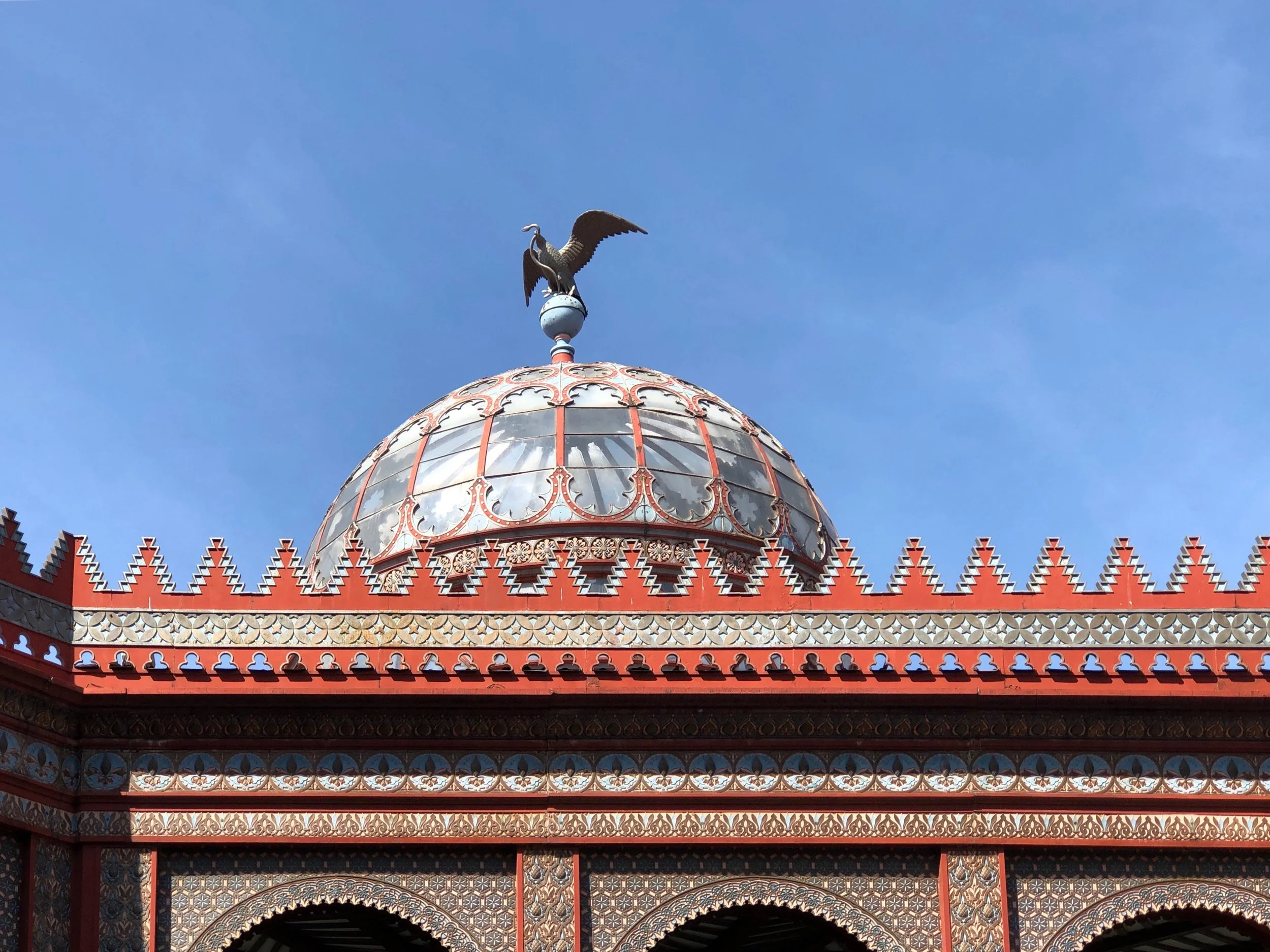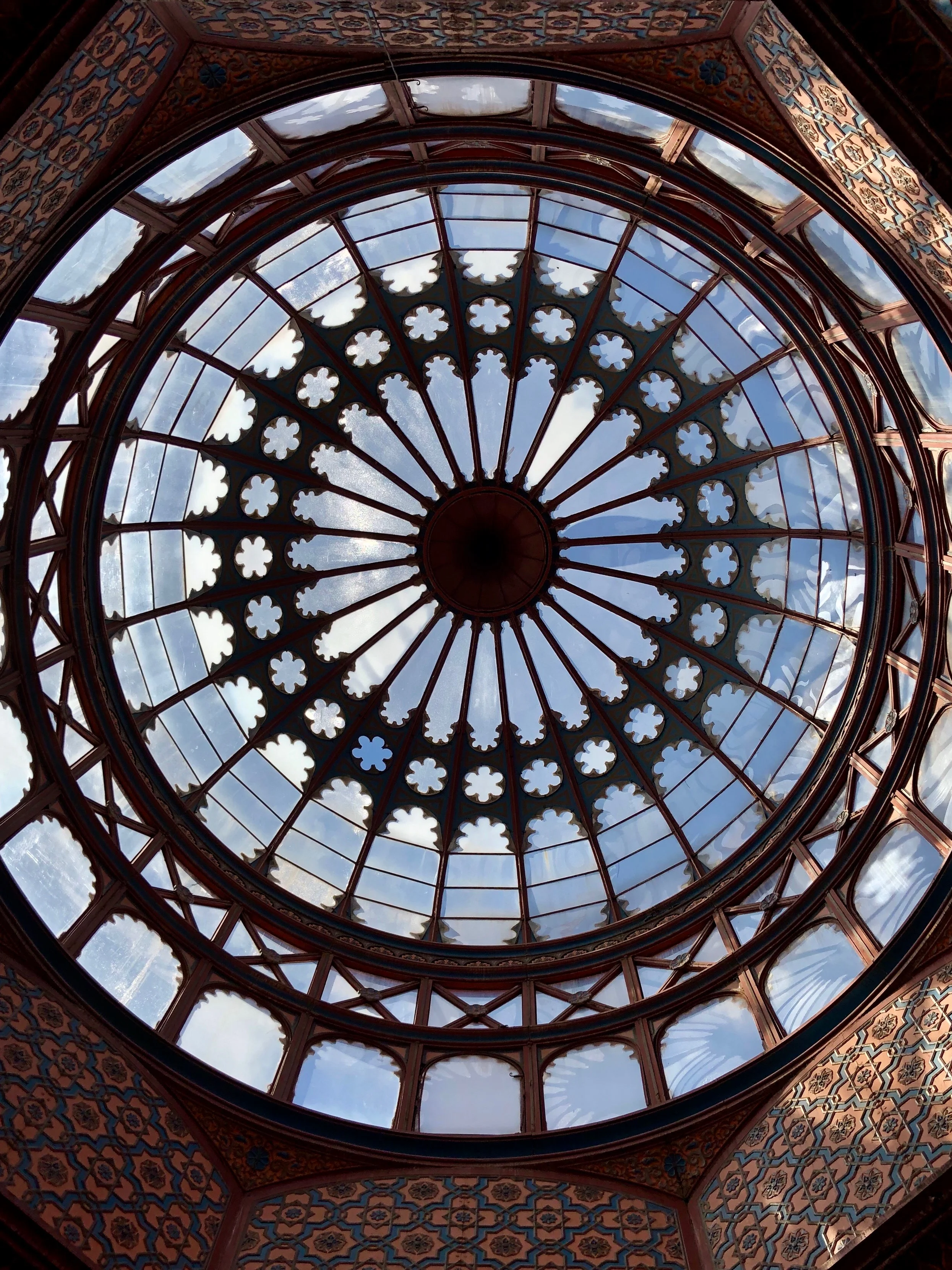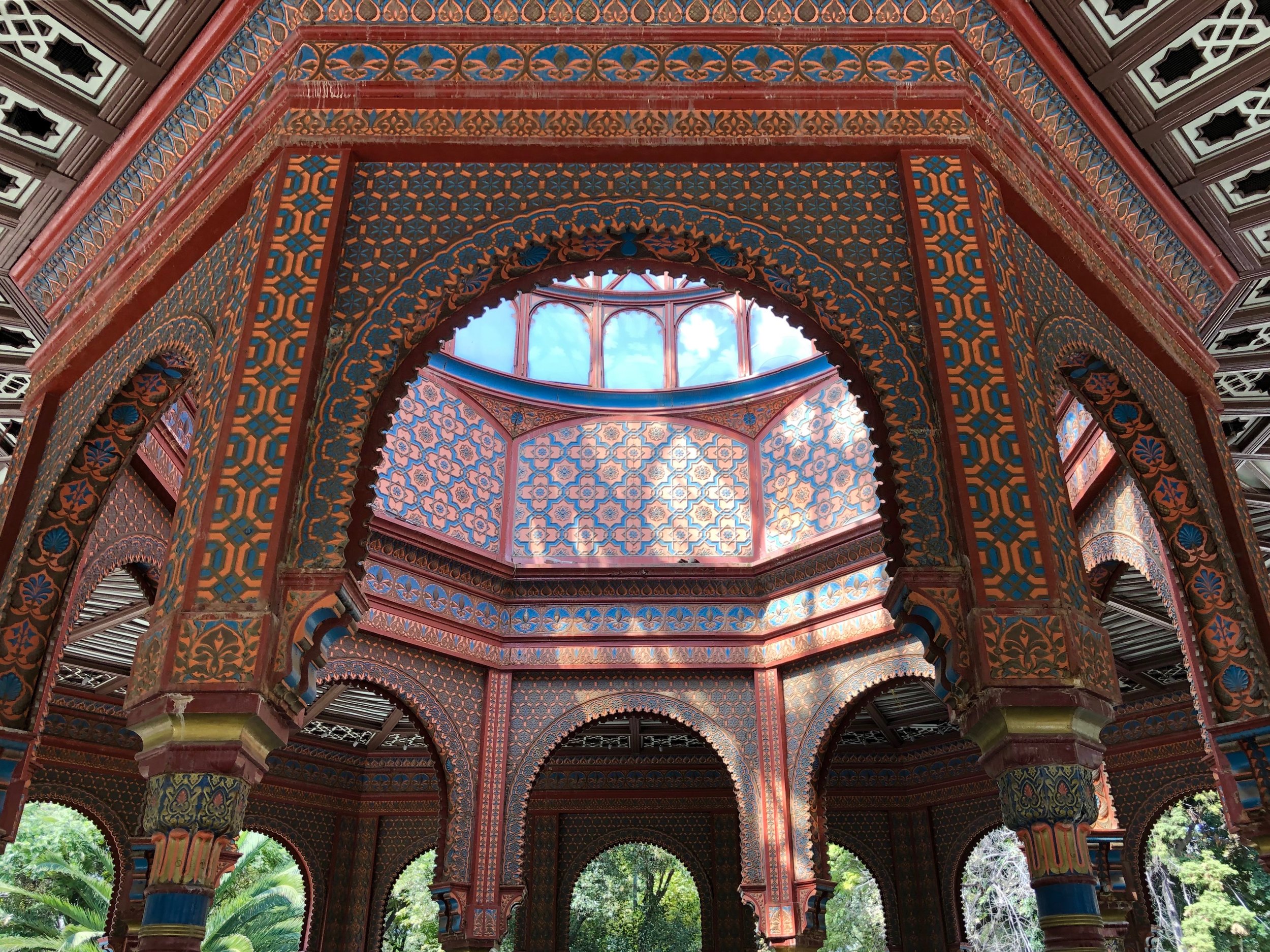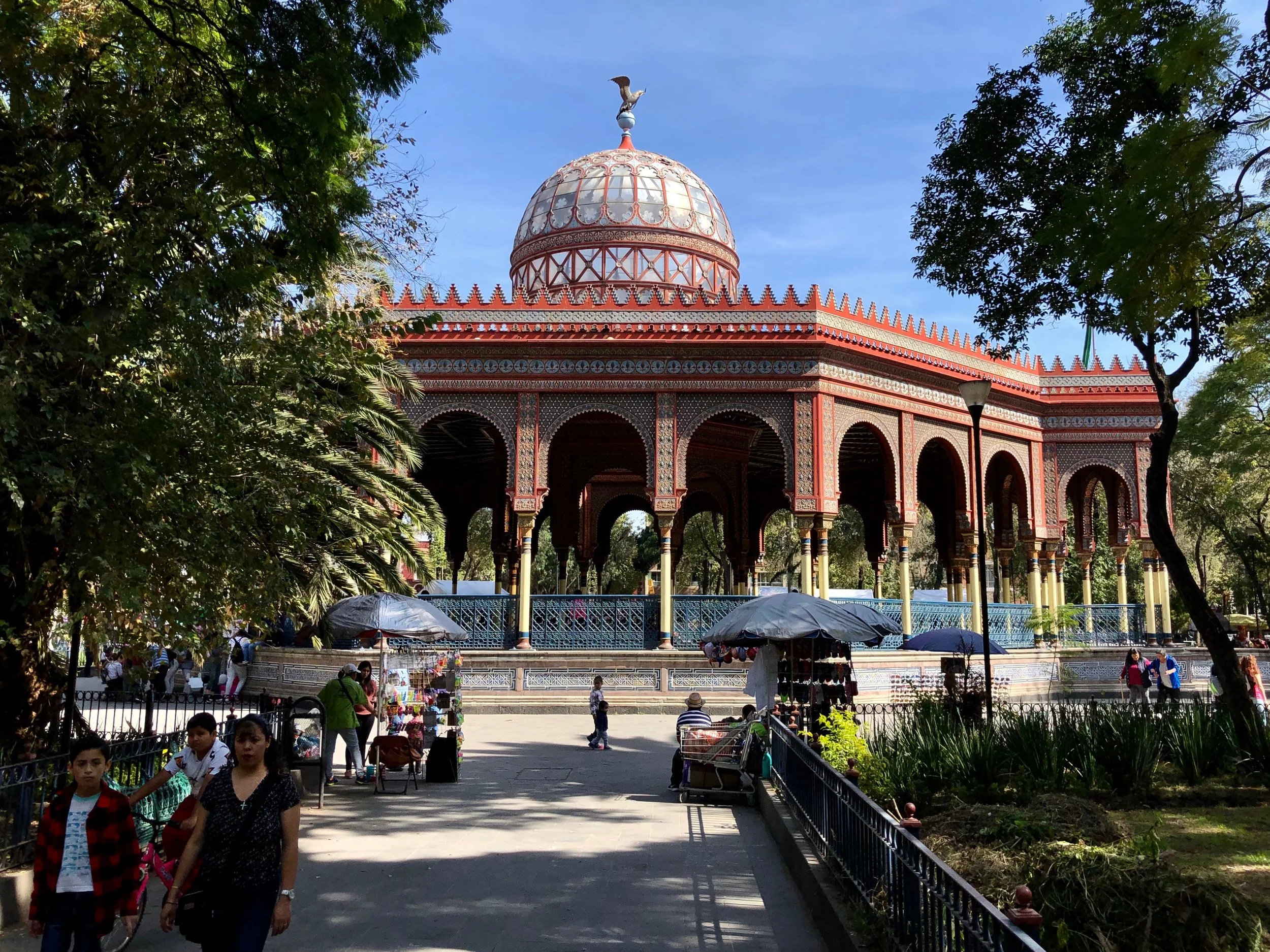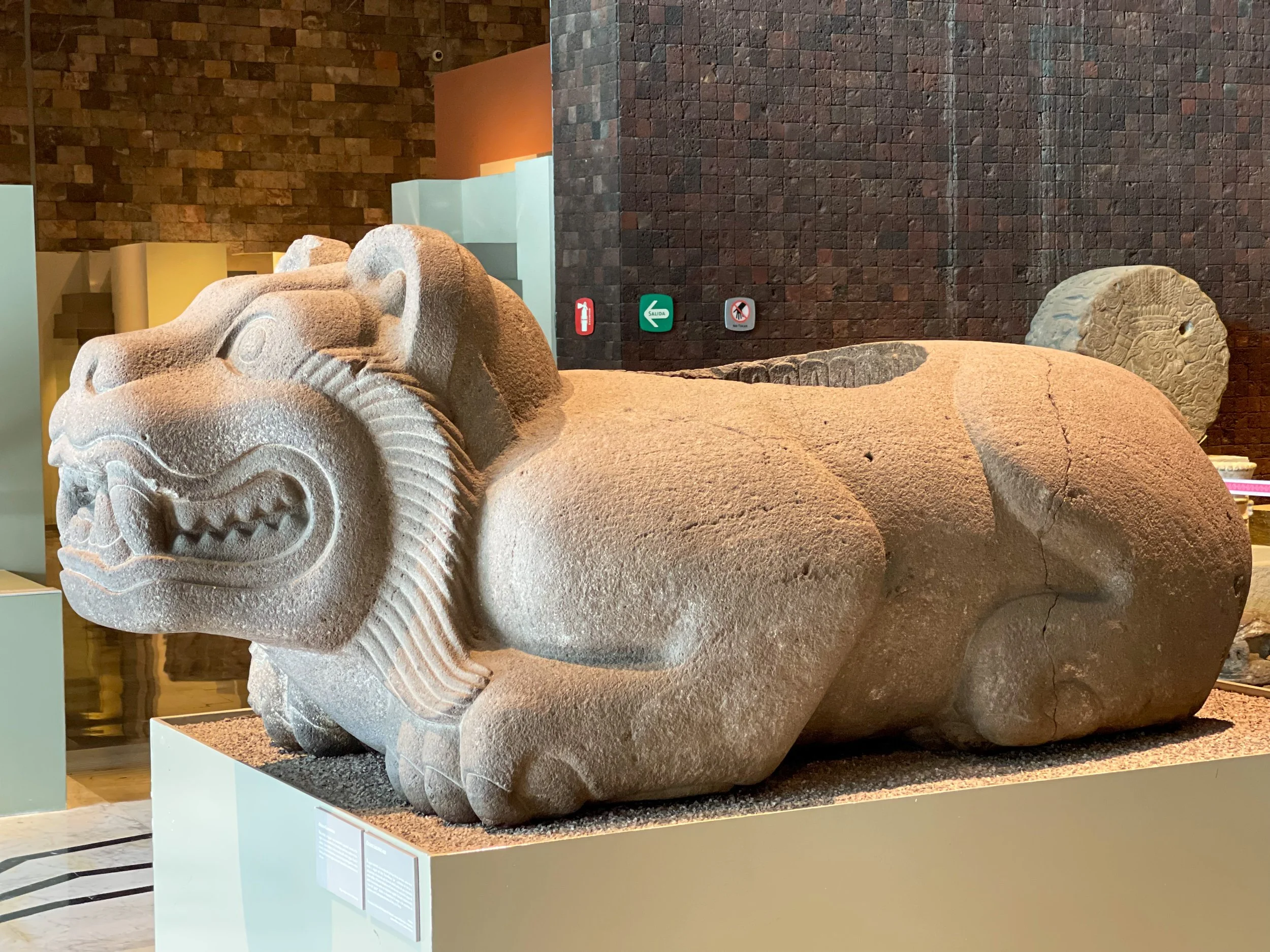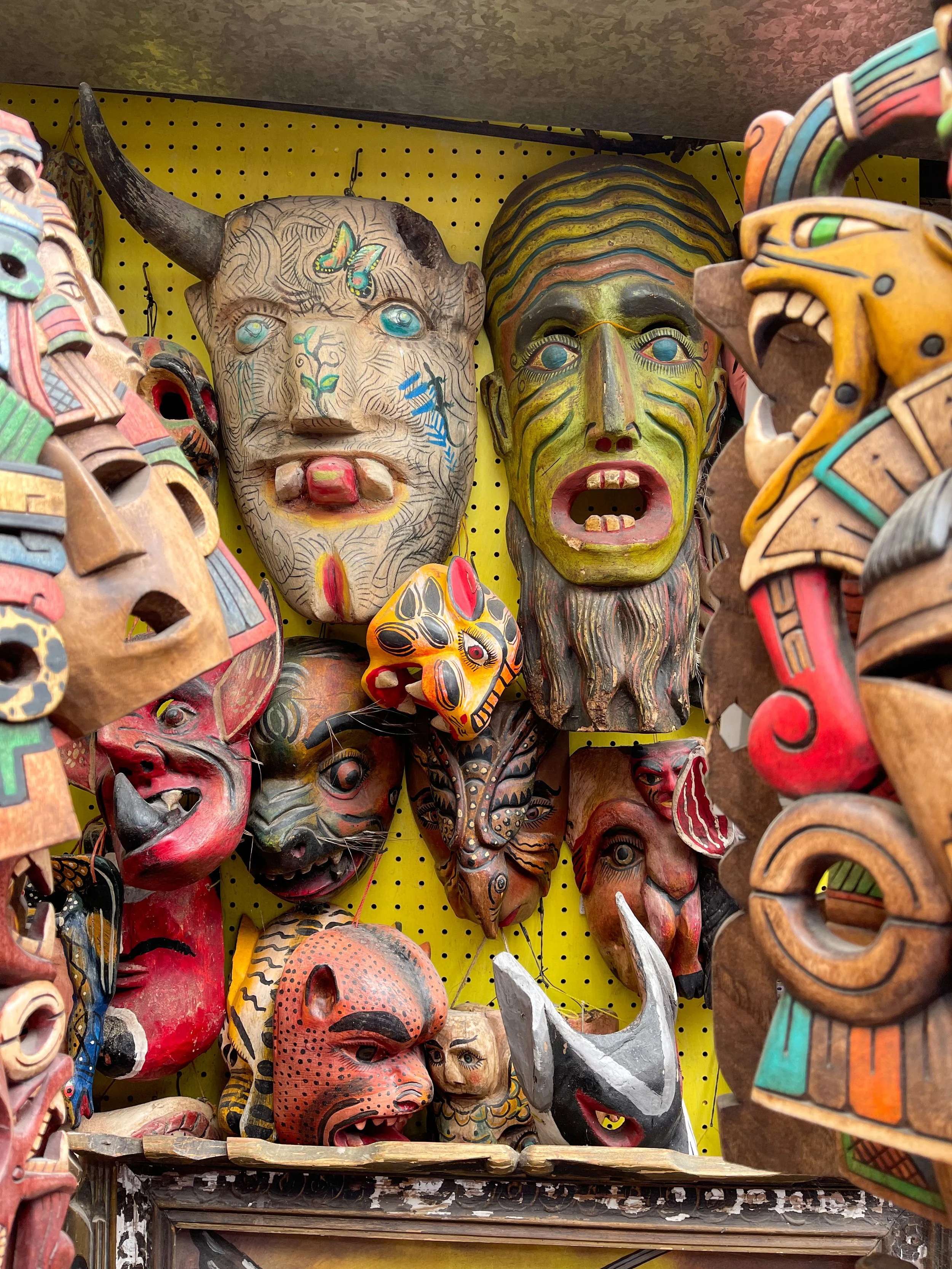Take a step back in time and visit this Mexico City hidden gem, a relic from a world exposition.
The Moroccan Pavilion is a fun place to spend part of an afternoon wandering Mexico City
After visiting the futuristic Biblioteca Vasconcelos, Wally and I made our way over to the neighborhood of Santa María la Ribera in search of the 19th century Kiosco Morisco, the Moroccan Pavilion.
It’s an unusual sight for Mexico City — something you’d imagine seeing in the South of Spain. Moorish in style, the octagonal edifice is supported by slender columns crowned by a dome of glass and iron in the center with a bronze eagle devouring a snake on top, the symbol of Mexico. An elaborate relic from the long-forgotten World’s Industrial and Cotton Centennial Exposition held in New Orleans in 1884, the Neo-Mudéjar landmark can be found at the intersection of Dr. Atl and Salvador Díaz Mirón, in the center of the Alameda de Santa María de la Ribera park.
“The Kiosko Marisco earned the nickname the “Mexican Alhambra Palace,” as stylistically it incorporated elements that reflected the palace in Granada, Spain. ”
Wally can’t say no to fresh fruit sprinkled with chili powder
Since we were both a bit hungry when we arrived, Wally ordered diced watermelon, topped with chili and lime served out of a large plastic tumbler from one of the park vendors. He had been hoping for mango, but the friendly woman running the cart told him it was out of season.
A drawing of the Kiosko Morisco when it was part of the world expo in New Orleans
From New Orleans to CDMX
The kiosk was conceived by architect and engineer José Ramón Ibarrola, and made its first appearance as a part of a large-scale exhibit representing Mexico on the word stage. Ibarrola had spent several years studying metallurgy in the United States, where he became friends with Andrew Carnegie. When it came time for the structure to be manufactured, it was agreed that it would be forged at Carnegie’s Union Mills Steel Foundry in Lawrenceville, Pennsylvania, and then shipped to Louisiana for the exposition.
The style is Mudéjar, a mix of Spanish and Moorish architecture
The pavilion is the centerpiece of Santa María la Ribera Park
Duke in the kiosk
Wally hanging on one of the columns
Comprised of several Mudéjar-style arches and slender columns, the attraction was a hit and was originally known simply as the Octagonal Building. However, it soon earned the nickname the “Mexican Alhambra Palace,” as stylistically it incorporated elements that reflected the Nasrid dynasty palace in Granada, Spain.
Tropical foliage framed by the pavilion’s arch
The kiosk served as the mining pavilion at the expo and contained large glass vitrines used to display precious stones and minerals. Visitors could only see them by circulating around the center, where the apex of an elevated pyramid culminated in a large onyx stone.
In an excerpt from La Memoria de la Exposición de New Orleans, Eduardo Emilio Zárate was quoted as saying:
The building, generally known as “The Mexican Alhambra,” is extremely popular. It is a beautiful miniature that imitates the historical palace of Granada well. Here are to be found the countless beautiful samples of the rich and almost inexhaustible mineral wealth of the country of Moctezuma.
After the expo closed, the structure was dismantled and shipped to Mexico City, where it was rebuilt in the grand Parque Alameda Central in the Centro Histórico. While there, it briefly served as the location where locals came to witness the announcements of the winners of the National Lottery draws. In 1910 it was dismantled once again and relocated to its third and current location. (President Porfirio Diaz ordered the Neoclassical Juárez Hemicycle monument to be built on the site where the kiosk formerly stood.)
During transport, it lost the stained glass windows that enclosed the bays, transforming the kiosk from an enclosed space to the open pavilion seen today.
In 1972 the National Institute of Anthropology declared the pavilion a historical monument, and it underwent restoration in 2003. It’s fitting that the Universidad Nacional Autónoma de México Geology Museum, containing cabinets filled with fossils and minerals, is located nearby, given the kiosk’s past history.
Atop the dome, an eagle attacks a snake — Mexico’s national symbol
Be sure to look up
Bright colors, pretty patterns and perfect symmetry add up to a visually pleasing attraction
A girl scoots past a cornhusk wreath seller
Inside the kiosk we sat for a moment and simply enjoyed people-watching. A young couple and their choreographer caught our attention as they practiced their salsa routine. Outside the pavilion, local seniors also danced to salsa music, pausing only briefly after each song ended. While we waited for our Uber (you should Uber everywhere — it’s dirt cheap and safe), we watched a quaint vignette play out before us: A young girl on her bright pink scooter paused in front of a man selling handmade wreaths woven from cornhusks.
The colonia of Santa María la Ribera was designated a Barrio Mágico (a “Magical Neighborhood”) in 2011, and after visiting the enchanting Kiosko Morisco, you could easily spend an afternoon wandering the pedestrian-friendly area, enjoying its nostalgic feel and low-key vibe. And if you get hungry, maybe grab a beef stroganoff-filled empanada at Kolobok, a restaurant serving Russian fare on the corner of Dr. Atl. –Duke
The pavilion has been moved around but has found a home in Santa María la Ribera
Kiosco Morisco
Calle Salvador Díaz Mirón S/N
Sta María la Ribera
06400 Ciudad de México, CDMX
Mexico

